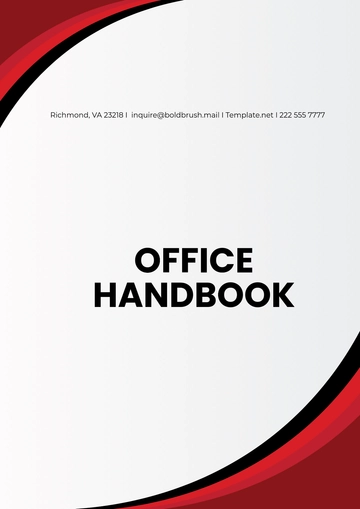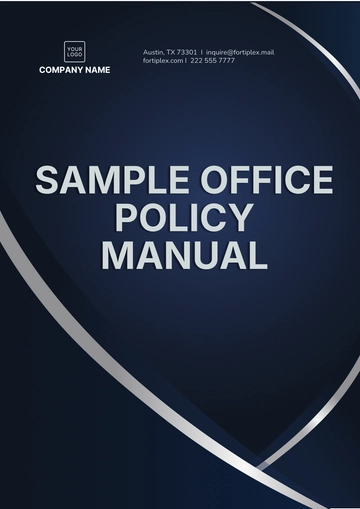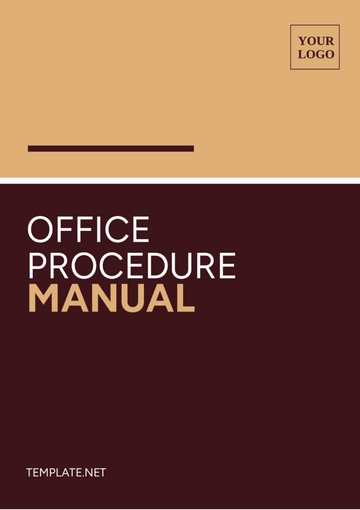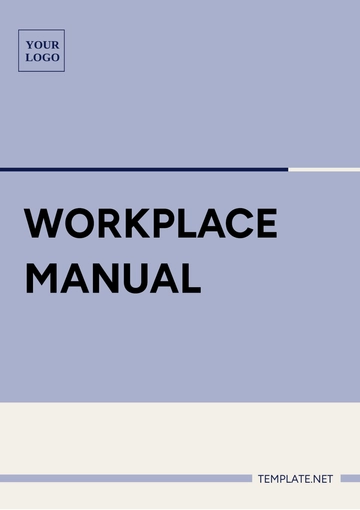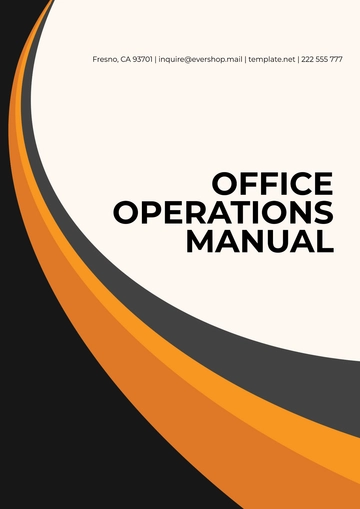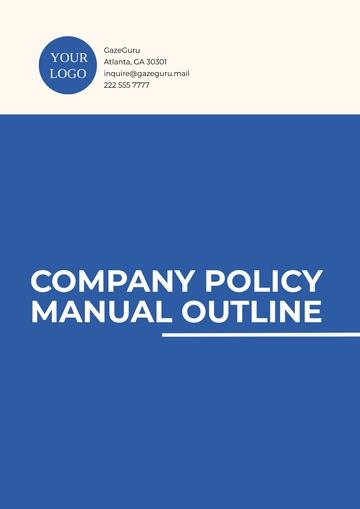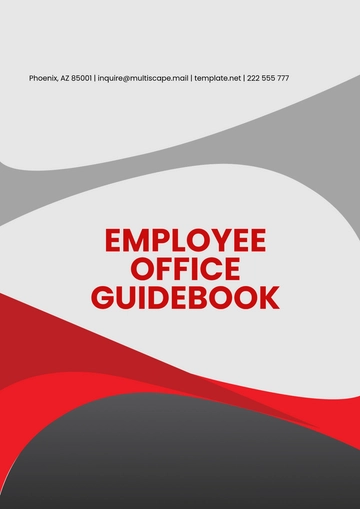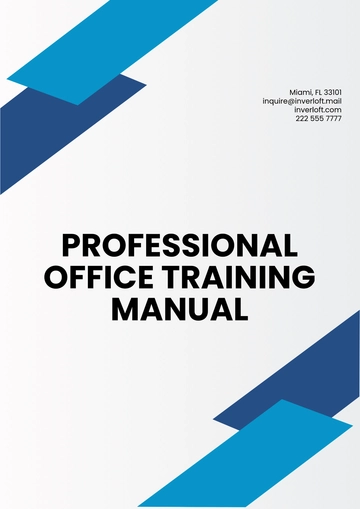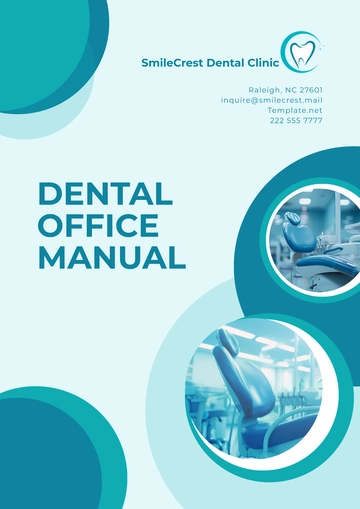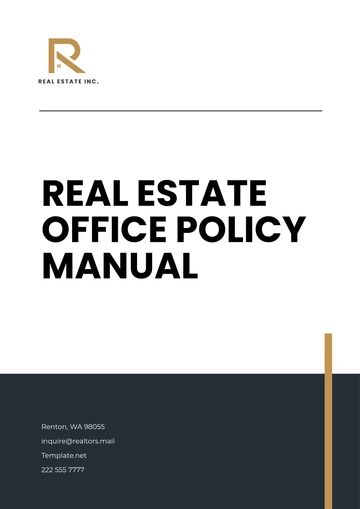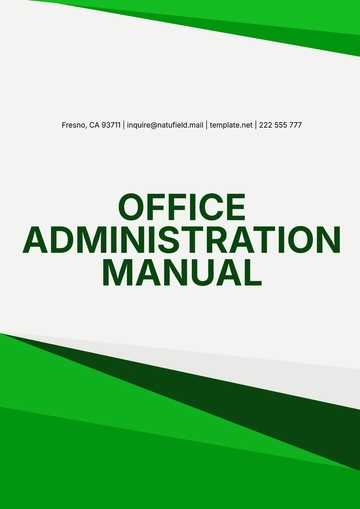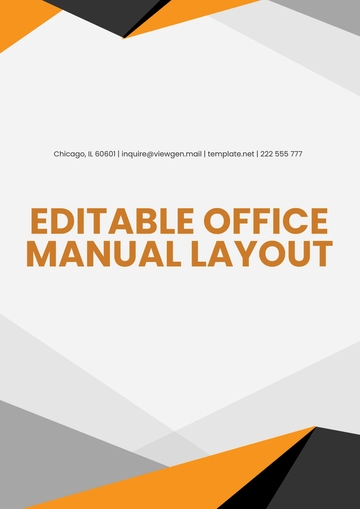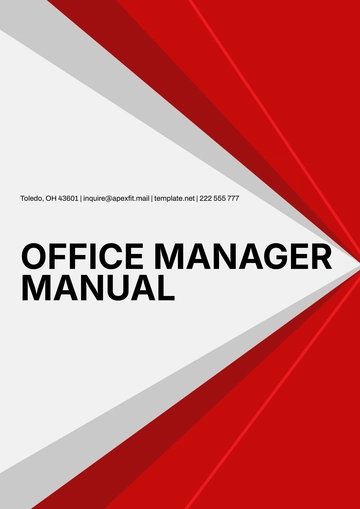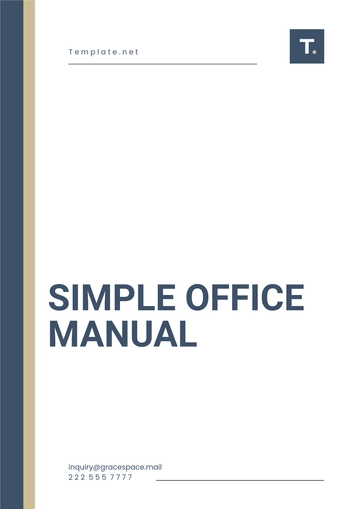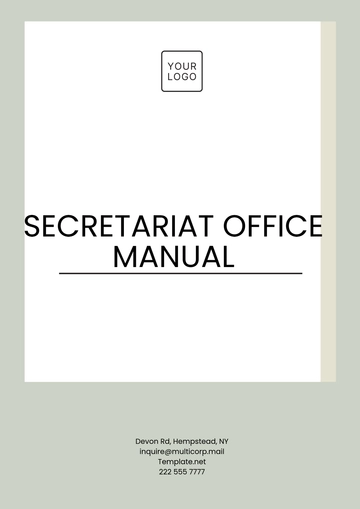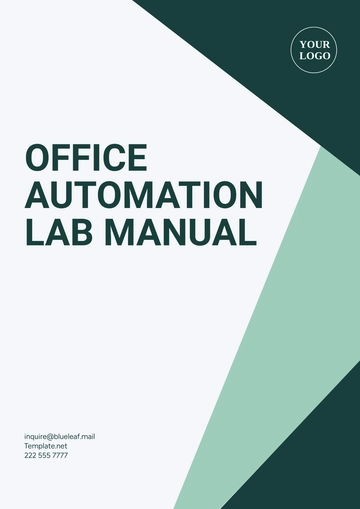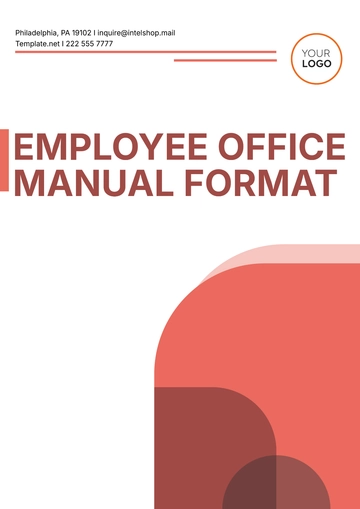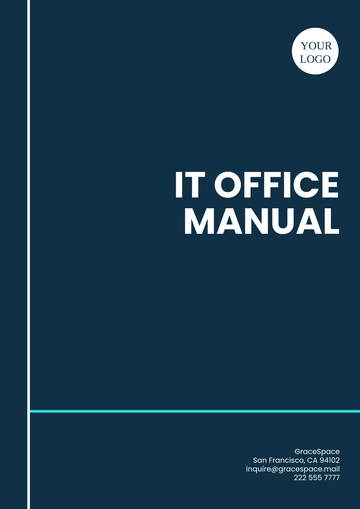Free Staff Manual

Prepared by: [Your Name]
I. Introduction
Welcome to the [YOUR COMPANY NAME] Staff Manual! This comprehensive guide is designed to provide you with all the necessary information and resources to excel in your role within [YOUR DEPARTMENT]. As a valued member of our team, you need to familiarize yourself with the policies, procedures, and expectations outlined in this manual.
A. About [Your Company Name]
[YOUR COMPANY NAME] is a leading [industry] company dedicated to [mission statement or core values]. Since [year], we have been committed to delivering [quality/service/etc.] to our customers while fostering a positive and inclusive work environment for our employees.
B. Purpose of the Manual
The purpose of this manual is to:
Provide an overview of [YOUR COMPANY NAME]'s policies and procedures.
Outline expectations for behavior, performance, and conduct.
Serve as a reference guide for employees to navigate various aspects of their role.
Ensure consistency and fairness in how policies are applied across the organization.
II. Getting Started
A. Orientation and Onboarding
New employees will undergo a comprehensive orientation and onboarding process to familiarize themselves with [YOUR COMPANY NAME]'s culture, values, and expectations. This includes:
Welcome Session: Introduction to key personnel and overview of the company's history and mission.
Training Programs: Participation in relevant training programs to develop necessary skills and knowledge for the role.
Onboarding Documents: Completion of required paperwork, including tax forms, benefits enrollment, and company policies acknowledgment.
B. Company Policies and Procedures
1. Code of Conduct
At [YOUR COMPANY NAME], we uphold the highest standards of ethical conduct and professionalism. Our Code of Conduct outlines the expected behaviors and responsibilities of all employees, including:
Integrity: Acting honestly and ethically in all business dealings.
Confidentiality: Safeguarding sensitive information and respecting privacy rights.
Conflict of Interest: Disclosing any potential conflicts of interest and avoiding situations that may compromise objectivity.
2. Attendance and Punctuality
Maintaining regular attendance and punctuality is essential for the efficient operation of our organization. Employees are expected to:
Arrive on Time: Report to work promptly and adhere to scheduled shifts.
Notify in Advance: Notify your supervisor of any anticipated absences or tardiness as soon as possible.
Follow Procedures: Follow established procedures for requesting time off or notifying of unexpected absences.
III. Communication and Collaboration
A. Internal Communication Channels
Effective communication is key to our success at [YOUR COMPANY NAME]. We utilize various channels to facilitate communication and collaboration among employees, including:
Email: Use company-provided email for official communication and correspondence.
Intranet: Access company news, updates, and resources through the company intranet portal.
Meetings: Participate in team meetings, departmental meetings, and company-wide gatherings to share information and exchange ideas.
B. Team Collaboration
Collaboration is encouraged across all departments and teams to promote innovation and productivity. Key strategies for effective collaboration include:
Open Communication: Share ideas, feedback, and concerns openly with team members and supervisors.
Team Building Activities: Participate in team-building activities and events to foster camaraderie and trust.
Respectful Interactions: Treat colleagues with respect and professionalism, valuing diversity and inclusivity.
IV. Performance Management
A. Performance Expectations
[YOUR COMPANY NAME] is committed to supporting employees in achieving their full potential. Performance expectations are communicated clearly and include:
Goals and Objectives: Set specific, measurable, achievable, relevant, and time-bound (SMART) goals aligned with departmental and organizational objectives.
Performance Metrics: Regularly evaluate performance against established metrics and provide constructive feedback for improvement.
Professional Development: Support ongoing learning and development opportunities to enhance skills and capabilities.
B. Performance Evaluation
Employees undergo periodic performance evaluations to assess progress, identify areas for improvement, and recognize achievements. The performance evaluation process includes:
Self-Assessment: Employees are encouraged to self-assess their performance and provide insights into their strengths and areas for growth.
Manager Feedback: Supervisors conduct performance reviews, providing feedback, coaching, and guidance to help employees succeed.
Performance Improvement Plans: In cases where performance falls below expectations, employees may be placed on a performance improvement plan (PIP) to outline specific actions for improvement.
V. Employee Benefits
A. Health and Wellness
[YOUR COMPANY NAME] values the health and well-being of its employees and offers a comprehensive benefits package, including:
Health Insurance: Access to medical, dental, and vision insurance plans to support your physical health needs.
Wellness Programs: Participation in wellness programs and initiatives aimed at promoting healthy lifestyles and preventing illness.
Employee Assistance Program (EAP): Confidential counseling services and resources to support mental and emotional well-being.
B. Retirement and Financial Planning
Planning for your future is important, and [YOUR COMPANY NAME] provides resources to help employees achieve their financial goals, such as:
401(k) Plan: Enrollment in a 401(k) retirement savings plan with employer-matching contributions to help you build your nest egg.
Financial Education: Access to financial planning resources, workshops, and seminars to enhance your financial literacy and planning skills.
Flexible Spending Accounts (FSAs): Pre-tax accounts for healthcare and dependent care expenses, providing tax savings and flexibility in managing expenses.
VI. Workplace Safety
A. Occupational Health and Safety
[YOUR COMPANY NAME] is committed to providing a safe and healthy work environment for all employees. Key components of our workplace safety program include:
Safety Policies: Adherence to safety policies and procedures to minimize risks and prevent accidents or injuries.
Training and Education: Ongoing training and education on safety protocols, emergency procedures, and hazard recognition.
Safety Equipment: Provision of necessary safety equipment and resources to protect employees from workplace hazards.
B. Emergency Preparedness
In the event of an emergency or crisis, [YOUR COMPANY NAME] has established protocols to ensure the safety and well-being of employees, including:
Emergency Response Plan: Development and implementation of an emergency response plan outlining procedures for evacuations, sheltering, and communication.
Emergency Contacts: Access to emergency contact information and resources for reporting incidents and seeking assistance.
Training and Drills: Regular training sessions and drills to familiarize employees with emergency procedures and ensure readiness in times of crisis.
VII. Compliance and Legal Obligations
A. Equal Employment Opportunity (EEO)
[YOUR COMPANY NAME] is an equal-opportunity employer and is committed to diversity, equity, and inclusion in the workplace. We adhere to all applicable laws and regulations regarding equal employment opportunity, including:
Non-Discrimination: Prohibition of discrimination based on race, color, religion, sex, national origin, age, disability, or other protected characteristics.
Reasonable Accommodation: Providing reasonable accommodations to qualified individuals with disabilities to ensure equal access to employment opportunities.
B. Legal Compliance
Employees are expected to comply with all applicable laws, regulations, and company policies in the course of their employment. Key areas of legal compliance include:
Labor Laws: Compliance with federal, state, and local labor laws regarding wages, hours, overtime, and other employment-related matters.
Privacy and Data Protection: Protection of sensitive information and compliance with privacy laws and regulations governing data collection, use, and disclosure.
Anti-Harassment and Anti-Discrimination: Prevention of harassment and discrimination in the workplace, including sexual harassment, racial discrimination, and other forms of prohibited conduct.
VIII. Conclusion
Congratulations on completing the [YOUR COMPANY NAME] Staff Manual! By familiarizing yourself with the information and resources provided in this manual, you are better equipped to succeed in your role and contribute to the success of our organization. If you have any further questions or need assistance, please don't hesitate to reach out to your supervisor or the Human Resources department. Thank you for your commitment to excellence and dedication to [YOUR COMPANY NAME]'s mission and values.
- 100% Customizable, free editor
- Access 1 Million+ Templates, photo’s & graphics
- Download or share as a template
- Click and replace photos, graphics, text, backgrounds
- Resize, crop, AI write & more
- Access advanced editor
Discover the ultimate solution for crafting a comprehensive staff manual effortlessly with Template.net. Our Staff Manual Template is fully editable and customizable, empowering you to tailor it to your organization's unique needs. Edit with ease using our Ai Editor Tool, ensuring seamless integration of your company's policies and procedures.

